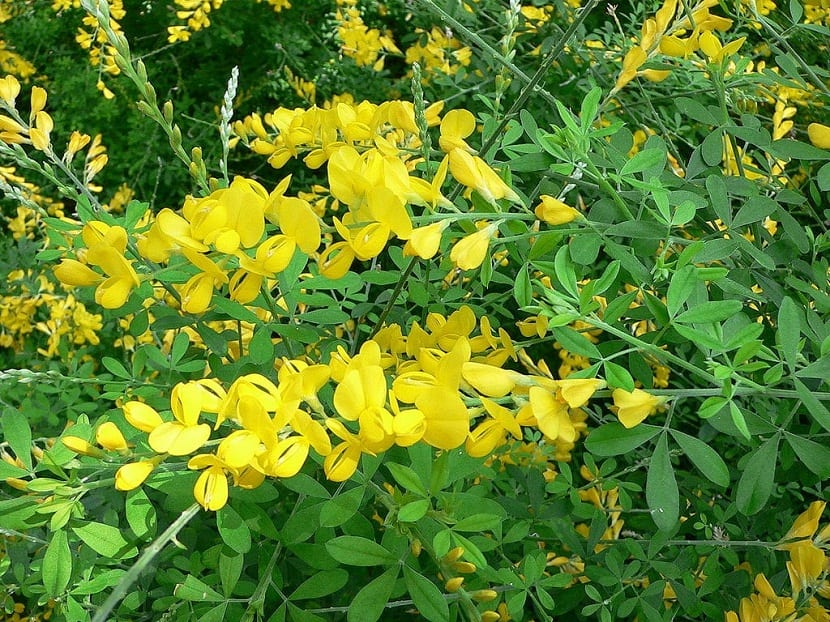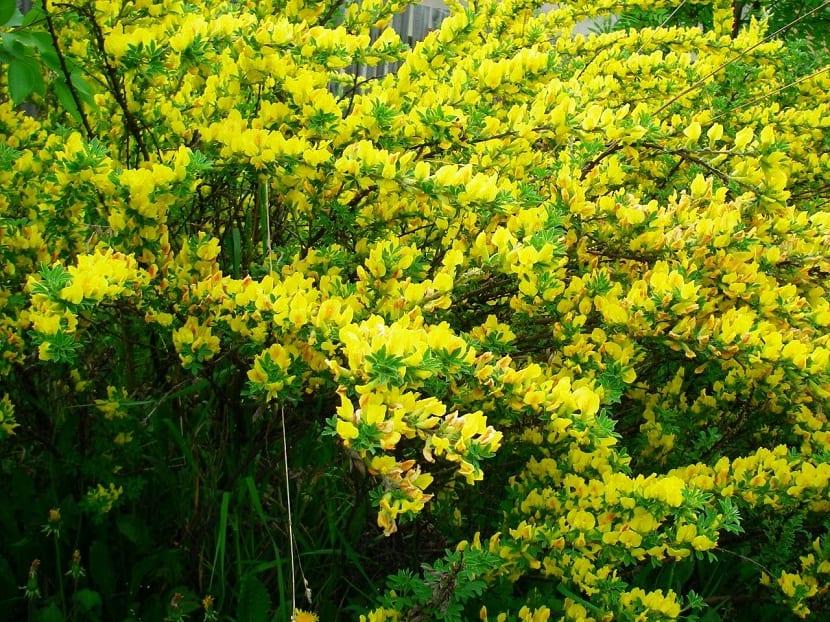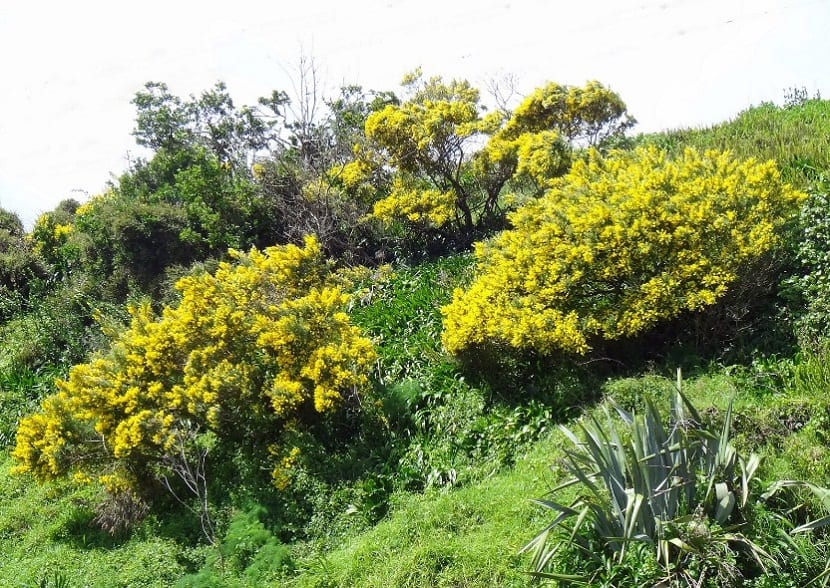
El Cytisus maderensis It is a native species of Madeira, the Canary Islands and the entire Mediterranean region. This upright, spreading shrub can reach up to 2 meters in height and a width of 1 meter, being its semi-evergreen foliage and shows a perfumed flowering in clusters that covers the entire plant. It grows in normal, well-drained soil, even limestone. It is an isolated, edge rock plant in warm regions.
El genus Cytisus includes approximately 60 species from North Africa, the Canary Islands, Europe, and Western Asia.
Features

El Cytisus maderensis It is a short, woody-stemmed shrub whose ramifications give it a scattered appearance. The young stems are longitudinally furrowed and have a pubescent surface, while its leaves are arranged alternately and originate from the petiole.
These consist of three elliptical to linear-lanceolate leaves, the middle one being larger than the remaining two. The upper surfaces of the leaflets are green and sparsely pubescent or glabrous, and the lower surfaces are pubescent.
Its pea-like flowers are yellow in shape. They are quite numerous and are presented separately or in small bunches that can contain from 3 to 9 flowers. They appear at the terminals of the stems and on their lateral branches and they have five sepals of green color that are partially united at the base in the calyx tube a short tube.
Its standard petal is larger than the contiguous ones; while the lower ones are shown folded. The flowering of this plant occurs at different stages of the year, either at the end of winter, spring and summer.
The fruit is a kind of soft pod, which changes color according to its maturation from green to brown. Flattened pods contain five to eight seeds and they roll up once opened.
Regarding your exposure to the sun, It must be exposed in sunny, spacious spaces with excellent ventilation, because this plant is prone to withering in closed spaces. If you plan to have an apartment, it is recommended to place it on balconies or terraces, as long as the weather is not very cold. It is not very tolerant to low temperatures, but it is to heat. When it is in the open, its survival could only put it at risk in a severe and prolonged drought.
Fertilization and irrigation of Cytisus maderensis
It is preferable to fertilize it in the autumn and spring seasons, using common fertilizers, you can also use a liquid fertilizer accompanied by irrigation. During spring and summer it is advisable to carry out a normal watering, while in winter it must be scarce.
However, and when watering specimens that are in the garden or in pots are going to be carried out, it is good to make sure that the soil is quite dry. Now, if they are planted outdoors, irrigation can be avoided except during dry seasons.
Propagation

Its propagation by seed must be carried out in the month of March placing the seeds shallow in mixed soil with a little sand added. When the plants reach 7 to 10 cm in height, they should be grafted into individual pots.
Propagation by cuttings can be carried out between the months of April and May, taking the specimens of the new shoots together with a piece of stem bark. After the lower leaves are removed, they are sown in pots with a content of peat and sand in similar parts.
Management
In this species, various symptoms are usually observed that are related to possible diseases caused by attacks by insects or pests and it is that if there is presence of small whitish-looking insects on the leaves or shoots of the plant, It can be aphids that are quite small mobile insects, with a yellowish-white appearance that attack the plants, and can even cause their death. In this case it is advisable to wash the leaves and stem or apply a specific insecticide for this type of pest.
Now and if the leaves turn yellow and some fine spider webs, specifically on the underside of the leaves, is a clear sign of the presence of red mites. To remove them, the sheets can be cleaned manually with soap.